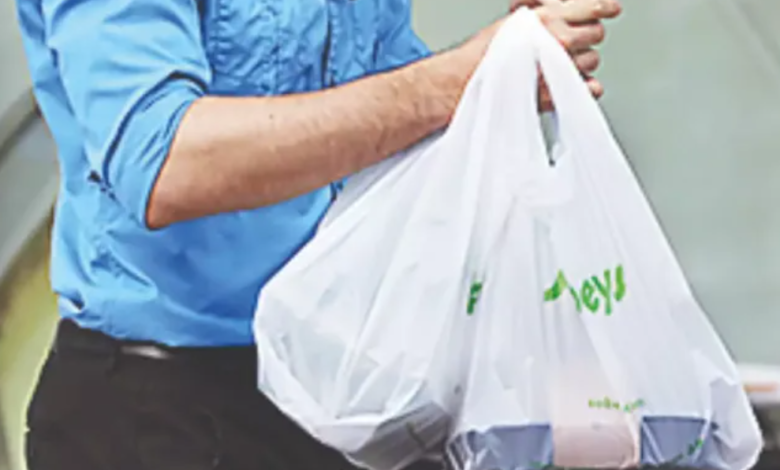India’s Ban On Single-Use Plastics Has Failed In Three Months

A survey indicated that the prohibited goods were still widely used in Delhi and Mumbai three months after India outlawed specific single-use plastic items in an effort to reduce plastic waste. While retailers lamented the lack of alternatives to these plastic products, experts contend that the prohibition unfairly targets the most disadvantaged while giving international firms free rein.
India is the world’s fifth-largest producer of plastic garbage. In his Independence Day speech in 2019, Prime Minister Narendra Modi urged the populace to eliminate India of single-use plastic. India has outlawed single-use plastic products including plastic straws that are widely strewn yet have no practical purpose as of July 1, 2022. Due to the harm that single-use plastic causes to terrestrial and aquatic ecosystems, the ban’s goal is to reduce plastic pollution.
Three months after the ban’s implementation, not much has changed on the ground as of October 1. In markets, restaurants, and other public spaces in Delhi, Mumbai, and Bengaluru, a survey discovered various goods made of banned plastic still being sold. Vendors claimed that no sanctions or warnings to stop using these items had been issued and that they were really still available in the wholesale form.
From the beginning, the ban drew criticism for covering too little of the overall amount of plastic garbage. According to estimates from the industry, less than 2% to 3% of India’s overall plastic trash is made up of single-use plastics that are now illegal.
Experts also point out that India hasn’t even completely outlawed single-use plastic. They contend that the prohibition unfairly targets the smallest sector of the plastics business, which is also the one that requires the most assistance in making the switch away from single-use plastic. According to experts, India needs to hold the major actors responsible for their proportion of plastic pollution.
The survey team contacted the Central Pollution Control Board and the Union Environment Ministry with inquiries regarding the ban’s inadequate conceptualization and implementation as well as with issues expressed by suppliers, manufacturers, and industry professionals. When they reply, this story will be updated.
The volume of waste plastic
Approximately 3.5 million tonnes of plastic were produced in India in 2020–21, according to information from 35 states and union territories. Tamil Nadu makes up 13% of this, followed by Punjab (12%), and Maharashtra (13%) At 1.56 million tonnes annually, India’s recycling capacity is less than half the total amount of plastic produced. As part of their Extended Producer Responsibility, brands are required to recycle about 8,00,000 tonnes annually.
The now-banned single-use plastic makes up a very small portion of the entire amount of plastic produced—between 2% and 3%, to be exact. Therefore, even if the ban had been successful, it would have had little effect on the production of plastic garbage.
Influence on Consumers
According to industry estimates in the Kotak India research, among the prohibited goods, the price of straws for low-value packs of juices and other beverages might rise with a switch from plastic to paper, from Rs 0.25 to Rs 0.30 to Rs 1 to Rs 1.25 per unit.
More than 30% of total volumes are made up of these low-value packets, and switching to alternatives could raise packaging costs, particularly in the case of sachets. The research cautions that any widespread prohibition of SUP (single-use plastic) in the medium term could harm volumes as well as the profitability of the sector.
Overall, this analysis supports the assertion of sector experts that there will be a cascade effect. The cost of using plastic in place of little, low-priced things rises; as a result, consumers buy fewer items, which has an impact on the sector.
News Mania Desk






